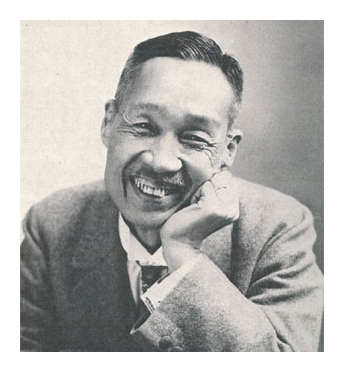
■The life of Dr. Shoma Morita (1874-1938)
Shoma Morita, the founder of Morita therapy, was born in 1874. He died of pneumonia at the age of 64 in 1938. Morita entered Tokyo Imperial University School of Medicine in 1898 and graduated in 1903. In that same year, he was appointed as a professor at Tokyo Jikeikai Hospital Medical College. Morita dedicated himself to the treatment of psychogenic diseases but the system of treatment known today as Morita therapy is considered to have formed around 1920. In 1937, Shoma Morita became professor emeritus at Jikei University School of Medicine.
Morita therapy is a unique system of psychotherapy for neurosis, founded by late the Japanese psychiatrist Shoma Morita in 1919. It has been shown to be highly effective, primarily in treating conditions such as interpersonal (social) phobia, agoraphobia, obsessive-compulsive disorder, hypochondria, and anxiety disorders (e.g., panic disorder, generalized anxiety disorder).
More recently,the applications of Morita therapy has extended into areas beyond neuroses, for example, in cases of chronic depression, and improving the mental health of cancer patients.
Morita observed that various neurotic symptoms develops among people who are, what he called, a shinkeishitsu personality, characterized by introverted, self-focused, worrisome, timid, sensitive, perfectionistic and idealistic tendencies. He identified a relatively high commonality between neuroses and these shinkeishitsu personality traits.(note 1) Morita also posited as the proximate cause of the disorders a specific obsessive psychological mechanism, which he termed toraware, that arises from these characteristics or temperaments. The mechanism of toraware includes two aspects which Morita called seishin kogo sayo(psychic interaction), and shiso no mujun (contradiction between ideas and facts). The first, seishin kogo sayo is a vicious cycle of sensation and attention in which the sufferer’s preoccupation with sensation of feeling experienced (e.g., fear or discomfort), leading to the continuous amplification and intensifying of the feeling. The second aspect called contradiction between ideas and facts emerges when an individual is experiencing fear or anxiety (which is real) engages in an impossible intellectual effort to make them go away; in an attempt to make their uncomfortable facts of circumstances match their ideal of existence without such distressing feelings.
Morita therapy helps patients overcome toraware by helping them to cultivate an attitude known as arugamama. Arugamama entails relinquishing the struggle to try and intellectually eliminate anxiety and symptoms, but instead to just lets them be. Secondly, it encourages the understanding that there exists on the other side of fear (shino kyofu), the desire (seino yokubo). Just as humans naturally harbor anxieties, they also intrinsically hold the desire to lead fullsome lives; the attainment of which requires due effort and progress. Patients are guided to engage in constructive/purposeful activities that exerts their desire for life. This action-based approach is intentionally designed to show patients how to broaden their range of experience in pursuit of a more constructive lifestyle. Morita therapy encourages them to start by doing what needs to be done – the tasks before them in the course of their daily lives – even as they harbor anxieties in parallel.
Simply put, the main goal of the therapy is to overcome neurosis by fostering an attitude of arugamama. For this very reason, the Morita therapeutic approach might accurately be described as a re-orientation of a person’s way of living.
(note 1) The shinkeishitsu personality
Understanding the pathogenesis of neurosis requires insight into the complex interplay of the disorder’s psychological, physical and social causative factors. One of the important psychological elements involved is an individual’s pre-existing personality disposition. Shoma Morita described the typical personality orientation of people prone to neurosis as a shinkeishitsu personality, which includes the following traits.
- Introspective and self-reflective/self-focused
- Prone to worry, timid, sensitive, tend to dwell on little things, and let things “get to” them (fragile personality aspects)
- Perfectionistic, idealistic, strong-willed, can’t stand losing (persistent personality aspects)
This shinkeishitsu personality brings together elements of fragility with more persistent characteristics. To the extent that they must coexist within the same personality, the persistent and more obsessive self often cannot abide the weaker, more timid self; a tension that is widely believed to invite internal psychological conflict.
